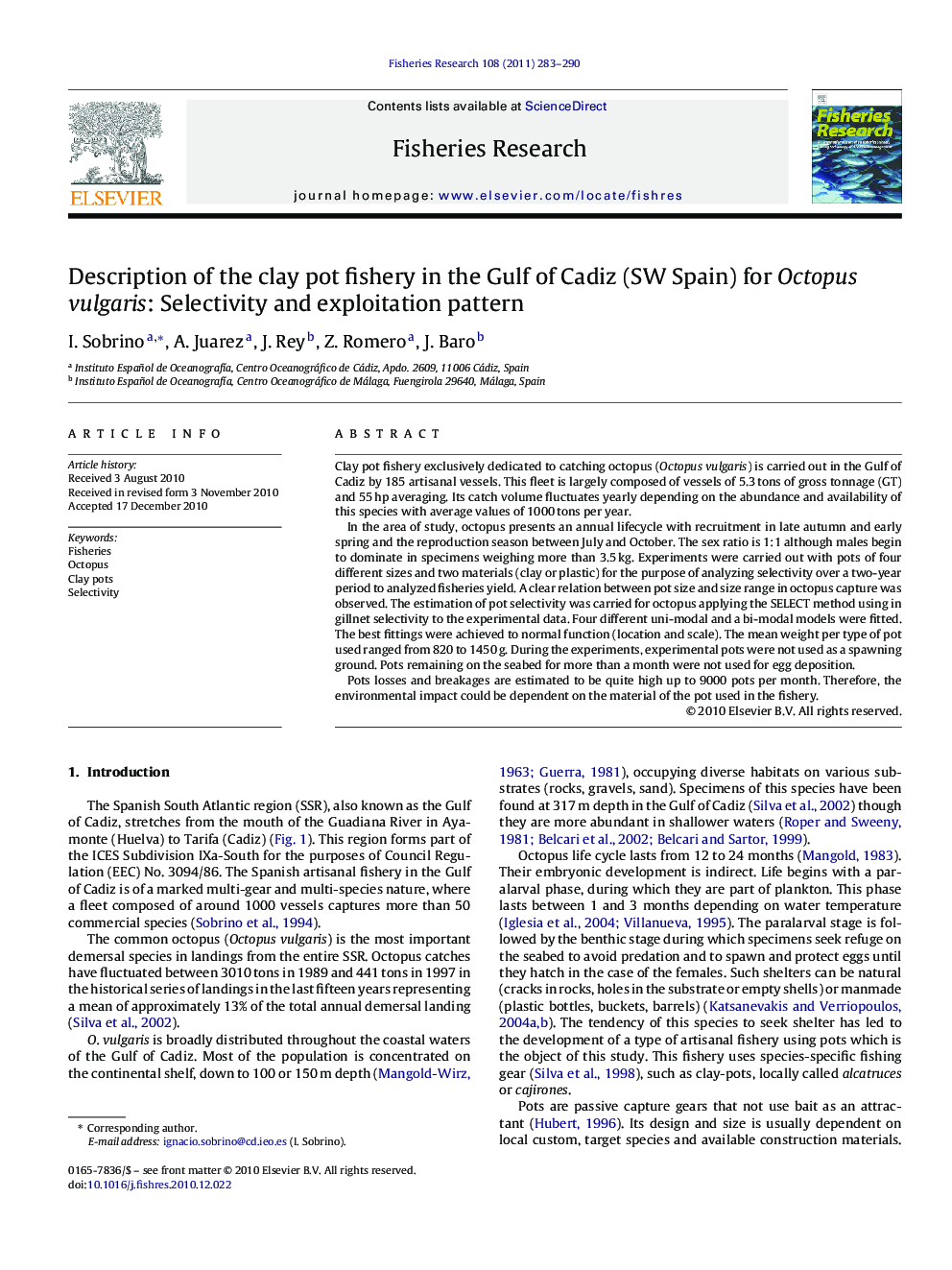| Article ID | Journal | Published Year | Pages | File Type |
|---|---|---|---|---|
| 4543759 | Fisheries Research | 2011 | 8 Pages |
Clay pot fishery exclusively dedicated to catching octopus (Octopus vulgaris) is carried out in the Gulf of Cadiz by 185 artisanal vessels. This fleet is largely composed of vessels of 5.3 tons of gross tonnage (GT) and 55 hp averaging. Its catch volume fluctuates yearly depending on the abundance and availability of this species with average values of 1000 tons per year.In the area of study, octopus presents an annual lifecycle with recruitment in late autumn and early spring and the reproduction season between July and October. The sex ratio is 1:1 although males begin to dominate in specimens weighing more than 3.5 kg. Experiments were carried out with pots of four different sizes and two materials (clay or plastic) for the purpose of analyzing selectivity over a two-year period to analyzed fisheries yield. A clear relation between pot size and size range in octopus capture was observed. The estimation of pot selectivity was carried for octopus applying the SELECT method using in gillnet selectivity to the experimental data. Four different uni-modal and a bi-modal models were fitted. The best fittings were achieved to normal function (location and scale). The mean weight per type of pot used ranged from 820 to 1450 g. During the experiments, experimental pots were not used as a spawning ground. Pots remaining on the seabed for more than a month were not used for egg deposition.Pots losses and breakages are estimated to be quite high up to 9000 pots per month. Therefore, the environmental impact could be dependent on the material of the pot used in the fishery.
